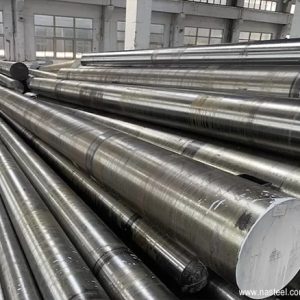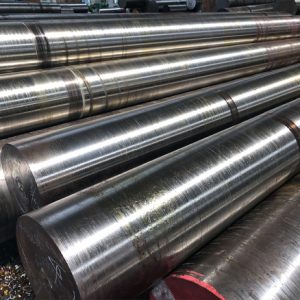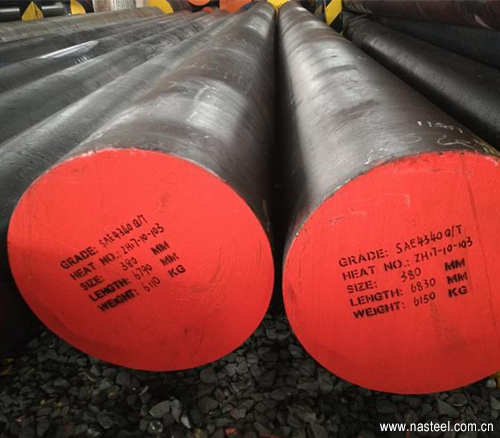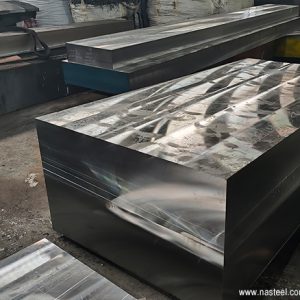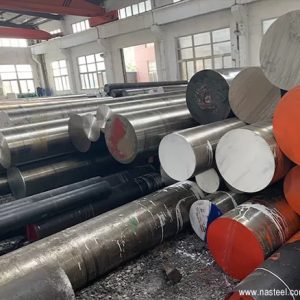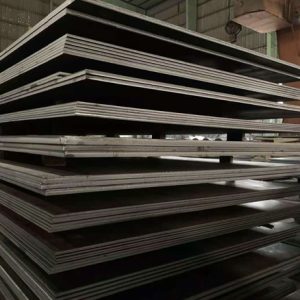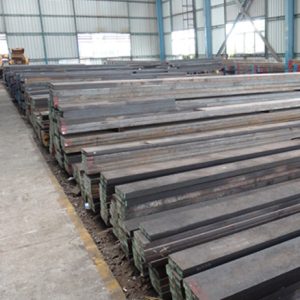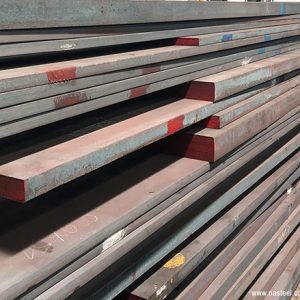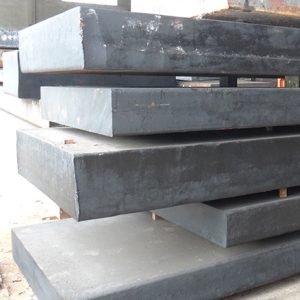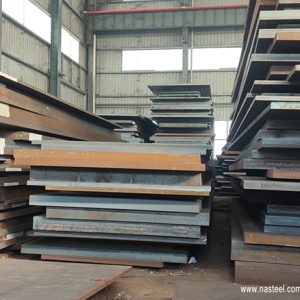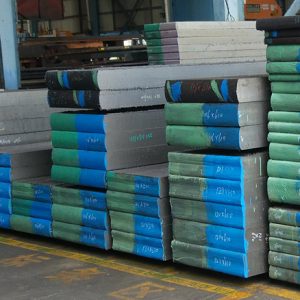AISI 4340 | 1.6582/34CrNiMo6 | SNCM439 | 40CrNiMoA | 40ХН2МА | EN24
Description
AISI 4340 steel is a high-strength, low-alloy steel known for its excellent toughness, fatigue resistance, and high tensile strength. It contains nickel, chromium, and molybdenum as key alloying elements, which enhance its hardenability and overall mechanical performance. AISI 4340 can be heat treated to achieve very high strength levels while maintaining good ductility and impact resistance, even in larger cross-sections. It is widely used in aerospace, automotive, and heavy machinery industries for critical components such as crankshafts, gears, connecting rods, and aircraft landing gear. Its superior toughness and strength make it ideal for high-stress applications requiring durability and reliability.
AISI 4340 alloy structure steel equivalent material includes European EN, ISO, German DIN 1.6580/30CrNiMo8 &1.6582/34CrNiMo6 &1.6511/36CrNiMo4, Japanese JIS standard SNCM439 Chinese GB 40CrNiMoA, etc.
Equivalent Material & Chemical Composition
| Standard | Grade | C | Si | Mn | P≤ | S≤ | Cr | Mo | Ni | V | Cu | W | Ti |
| GB | 40CrNiMoA | 0.37~0.44 | 0.17~0.37 | 0.50~0.80 | 0.03 | 0.03 | 0.60~0.90 | 0.15~0.25 | 1.25~1.65 | ||||
| GOST | 40XH2MA | 0.37~0.44 | 0.17~0.37 | 0.50~0.80 | 0.025 | 0.025 | 0.60~0.90 | 0.15~0.25 | 1.25~1.65 | ≤0.05 | ≤0.3 | ≤0.20 | ≤0.03 |
| DIN | 1.6580/30CrNiMo8 | 0,26 – 0,34 | ≤0,40 | 0,30 – 0,60 | 0.035 | 0.035 | 1,80 – 2,20 | 0,30 – 0,50 | 1,80 – 2,20 | ||||
| DIN | 1.6582/34CrNiMo6 | 0,30 – 0,38 | ≤0,40 | 0,50 – 0,80 | 0.035 | 0.035 | 1,30 – 1,70 | 0,15 – 0,30 | 1,30 – 1,70 | ||||
| DIN | 1.6511/36CrNiMo4 | 0.32~0.40 | ≤ 0.40 | 0.50~0.80 | 0.035 | 0.035 | 0.90~1.20 | 0.15~0.30 | 0.90~1.20 | ||||
| AISI | 4340 | 0.38~0.43 | 0.15~0.35 | 0.60~0.80 | 0.035 | 0.04 | 0.70-0.90 | 0.20~0.30 | 1.65~2.00 | ||||
| AISI | 9840 | 0.38-0.43 | 0.15-0.35 | 0.70-0.90 | 0.04 | 0.04 | 0.70-0.90 | 0.20-0.30 | 0.85-1.15 | ||||
| JIS | SNCM439 | 0.36~0.43 | 0.15~0.35 | 0.60~0.90 | 0.03 | 0.03 | 0.60-1.00 | 0.15~0.30 | 1.60~2.00 | ≤0.3 | |||
| BS | EN24 | 0.35-0.45 | 0.10-0.35 | 0.45-0.70 | 0.05 | 0.05 | 0.90-1.40 | 0.20-0.35 | 1.3-1.8 |
Characteristics
« It is a heat treatable, low alloy steel containing nickel, chromium and molybdenum. It is known for its toughness and capability of developing high strength in the heat treated condition while retain-ing good fatigue strength.
« But with high flake crake sensitivity and temper brittleness.
« It is not good at welding, before welding should preheat in high temperature, after welding must do stress relieving, applicate after quenched and tempered.
Applications
For permanently stressed components with large cross sections for automotive and mechanical engineering. For economic performance under severe dynamic stress, parts must be designed for optimum strength or toughness.
Physical Properties
| Properties | Metric |
| Density | 7.85g/cm³ |
| Melting Point | 1420 ℃ -1427 ℃ |
| Thermal Conductivity | 44.5 W/m・K |
| Coefficient Of Thermal Expansion | 12.3 µm/m°C |
| Modulus Of Elasticity | 190-210GPa |
| Poisson’S Ratio | 0.27-0.30 |
| Resistivity | 0.0000248 ohm-cm |
| Specific Heat Capacity | 0.519 J/g-°C |
| Specific Heat Capacity | 0.473 J/g-°C |
Mechanical Properties
| Properties | Metric |
| Tensile strength (σb) | 930-1080 MPa |
| Yield strength (σs) | ≥835MPa |
| Elongation (δ5) | ≥12% |
| Section shrinkage (ψ) | ≥55 |
| Impact work (Aku) | ≥78J |
| Impact toughness value (αkv) | ≥98J/cm² |
| Hardness | ≤269HB |
Heat Treatment
Quenching
Ordinary quenching: AISI4340 steel is usually heated to a certain temperature (such as around 800 ° C) for austenitization, and then rapidly cooled (such as quenching in oil). The quenching process promotes the transformation of steel structure from ferrite and pearlite to needle like martensite.
Double vacuum smelting and quenching: the microstructure of AISI4340 steel as quenched is mainly composed of Flat noodles and lamellar twin martensite, and the dislocation density in Flat noodles is high.
Tempering:
Effect of tempering temperature: With the increase of tempering temperature, the microstructure and properties of AISI4340 steel will change. For example, after tempering at 350 ℃, a large amount of carbides precipitate in AISI4340 steel produced by double vacuum smelting, and lamellar twinning martensite can still be observed; As the tempering temperature continues to increase, tempered martensite gradually forms.
Reason for property change: with the increase of tempering temperature, the lamellar twin martensite in AISI4340 steel produced by double vacuum smelting gradually decomposes and disappears, and the dislocation density in Flat noodles decreases, leading to the decrease of its strength, while the spheroidization of precipitated carbide is the main reason for the increase of plasticity.
Effect of different tempering temperatures: When heat treating the AISI4340 steel fan spindle, after quenching at 850 ℃ and tempering at 540 ℃, the mechanical properties of the spindle meet the technical requirements, including tensile strength of 1250 MPa, yield strength of 1140 MPa, elongation at break of 14.5%, section shrinkage rate of 55%, -40 ℃ impact absorption energy of 38.5-41.3 J, and surface hardness of 40-42 HRC3. The AISI/SAE 4340 steel was quenched and tempered at 300 ° C, 350 ° C, and 400 ° C, respectively. The results showed that the hardness and torsional resistance increased at different tempering temperatures.
